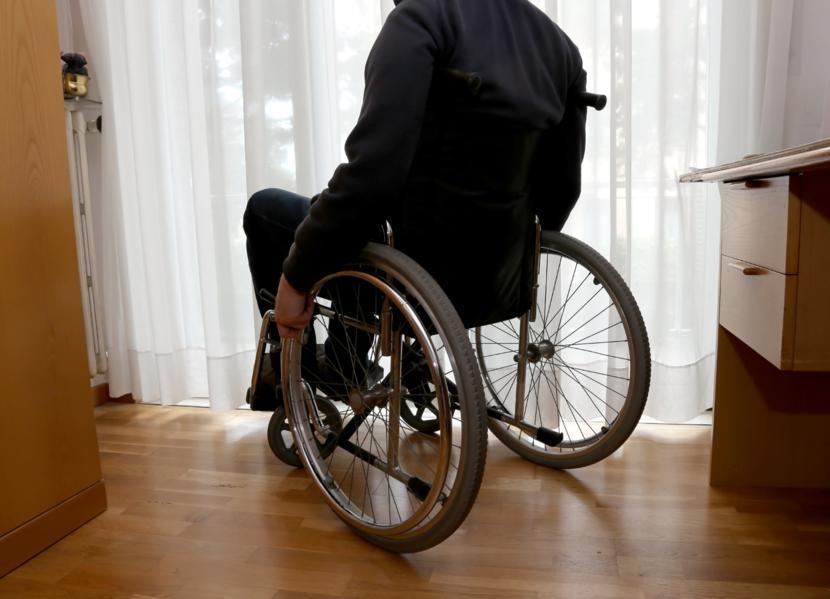Coping with Muscular Dystrophy

Discussing with a child that they have a muscle wasting disease is not easy. People who are diagnosed with muscular dystrophy have a mind that functions normally, but a body that does not. Being a parent of a child with MD revolves around acceptance. When you get past the initial fear and devastation, you will realize that life still has many joys for your family. The unexpected diagnosis makes parents realize that they need to implement additional coping strategies into the child's school life so that he or she can continue with education. Muscular dystrophy disease causes a gradual loss of muscle mass and general weakness. This illness interferes with the proteins which are required to build healthy muscles in an individual. This disease usually manifests itself differently in different people. Some symptoms of this disease can be noticed as early as during childhood but in some people, it is visible during adulthood.
Does muscular dystrophy have a cure?
Unfortunately, this disease does not have any cure. You cannot get rid of it completely. It is a condition which requires constant treatment in order to manage it. If the disease is not pinpointed at an early stage so that the patient can get treatment, he or she might lose the ability to walk completely. It also affects the trachea muscles making someone experience difficulties when swallowing or breathing. If this disease is identified at an early stage, then the treatment will begin earlier, thus making it easier for the individual suffering from this disease to cope with it.
The types of muscular dystrophy
There are different types of muscular dystrophy, and it is important to know all of them so that you can be in a position to know your type. Acceptance is one of the methods of coping with this disease. Here are the different types of muscular dystrophy:
Duchenne muscular dystrophy
This is the most common form of muscular dystrophy. Most people suffering from this disease have this variety. It is very rampant in boys. It can be passed genetically, therefore, knowing the symptoms which normally appear around two years after birth is important. Here are the symptoms of this variety of muscular dystrophy:
- The child will fall frequently.
- Playing or running becomes difficult.
- It becomes difficult to get up from a lying position.
- Complaints of muscle aches and stiffness.
- Learning for the child becomes challenging.
- The tendency of walking on toes.
These are the most common symptoms of this variety of muscular dystrophy. It is important to recognize them at an early stage in order for treatment to take place.
Becker muscular dystrophy: The symptoms of this variety are common but they will start appearing in the mid twenty’s.
Myotonic muscular dystrophy: This variety is characterized by an individual being unable to relax the muscle after they contract it. The neck and face muscles are commonly affected.
Facioscapulohumeral: It is characterized by muscle weakness in the face region and the shoulders. The symptoms may appear during childhood or later in the early 40s.
Congenital: This type of muscular dystrophy affects children at birth. The disease will progress gradually as the child grows older.
Those are the different types of muscular dystrophy; the best way to cope with this disease is to understand it. When knowing all about it, its symptoms and varieties, then you will be in a position to come up with a strategy which will help you cope with this disease. Remember, we said that this disease does not have any cure; therefore it is a lifelong condition which has to be treated and dealt with probably your whole life. This means that you have to come up with an effective strategy which will facilitate you and help you manage muscular dystrophy.
How can you cope with muscular dystrophy?
The first step to coping with this disease is acceptance. You have to accept that you are sick and that instead of giving up, you will persevere and stay strong. Most people give up during the early stages and they refuse treatment.
A boy named Liam was diagnosed with MD. Liam’s parents tried to set limits for him. But during a pediatrician visit, the doctor wanted to know why he was not involved in any games. Had it not been for the doctor, his parents would have not known he loved baseball, which he was able to play for 3 years.
This disease has posed a challenge to many people suffering from it, but with the latest technology and medication, it has become a little bit easier to deal with. You can treat it using drug therapies, physical therapies and technology. You will find out that it will eventually get easier and bearable. One thing we should bear in mind is that the symptoms of this disease progress over time, therefore you will find that by the time age is catching up with you, you won't be able to do the things you used to. This is why it is so helpful to have strategies in place to help you cope with the disease.
Changing the living environment: Since the patient will be in a wheelchair for the better part of his or her life, the environment should be made accessible. For example, the doorways could be widened a little bit, the stairs should be replaced with ramps, or you can make changes in the house such that almost everything is easily accessible by the patient. This will make it easier for the patient and the family members. He or she will not require help in doing everything.
Laws: Currently, society has made progress in accommodating people with disabilities. The law, for instance, entitles a child to have full and inclusive education besides employment and access to public places.
Technology: Because of technological innovations, people can use devices to do school homework, play or work. Now, Liam has voice activated software and it makes a huge difference in his life from his toys, MP3 player to his cell phone. He is able to navigate through life.
Keeping fit: Keeping fit will help the person who has been diagnosed with MD maintain a healthy weight. This will reduce stress on the already weakening muscles. A healthy weight will also prevent some health conditions such as obesity.
Being physical activity: Frequent physical activities such as swimming or light workouts will keep the muscles strong. This disease causes the muscles to weaken; therefore doing physical activities will ensure that the muscles are kept strong for as long as possible. They won’t succumb to the disease easily or soon enough.
Finding a good resting place: Later on, as the disease progresses, you will find out that resting will become an uphill task. Finding a good sleeping position will be a little bit tricky, but with current technology and medical advancement, there are certain beds which help in enhancing comfort and the patient can rest properly.
Emotional tips
Child independence: Encourage the child to be independent. It makes them develop self-worth. Let them socialize a bit with friends and engage in activities they cherish.
Decision making: As your child grows older, don't make decisions for them concerning education, social or health care. Your job is well cut out to provide guidance and knowledge to help them navigate. Support them fully.
Changing school needs: As the disease progresses, consider changing classrooms so that they are not accidentally excluded from activities.
Open communication: Have an open communication with the child. Let them share their worries and concerns. Find out if your child is exposed to bullying, intimidations or any form of abuse.
Closing thoughts
Today, Liam has a girlfriend and is accepted by his peers. He taught his parents more than they have taught him. Because he was surrounded by positive people and he met amazing ones along his way, he was able to reach his hopes and dreams.
Your child’s condition is never your fault. As the disease progresses, it gives the family time to adjust to the new situation.















